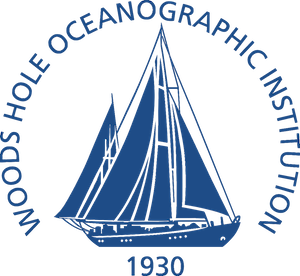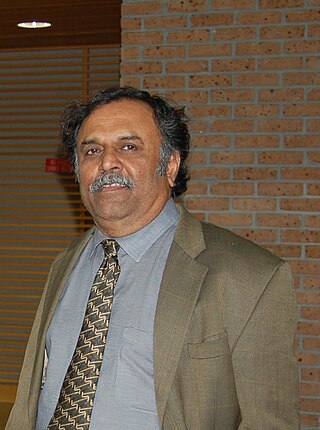External links
- Michael Triantafyllou publications indexed by Google Scholar
Michael Triantafyllou is Professor of Mechanical and Ocean Engineering in the Department of Mechanical Engineering, Director of the Center for Ocean Engineering, Head of the Area of Ocean Science and Engineering, and Director of the Testing Tank and Propeller Tunnel Facilities at the Massachusetts Institute of Technology (MIT). He is best known for his work on underwater robots, based upon and emulating the performance of fish, including the six-foot laboratory robot the RoboTuna (part of a permanent exhibition at the Science Museum in London since 1998), the free-swimming RoboPike (1998), and the RoboTurtle (2005).
Triantafyllou was born and grew up in Athens, Greece. After graduating from the National Technical University of Athens in 1974 (Naval Architecture and Marine Engineering), he continued with graduate studies at MIT. In 1977 he graduated with a dual S.M. in Ocean Engineering and Mechanical Engineering in 1977, followed in 1979 by an Sc.D. in Ocean Engineering. Upon receiving his doctorate, Triantafyllou took up a teaching post at MIT in the Department of Ocean Engineering.
Triantafyllou has been a visiting scientist at the Woods Hole Oceanographic Institution, Chairman of the Joint MIT/WHOI Program Committee in Oceanographic Engineering, and visiting professor at the National Technical University of Athens in Greece, Kyushu University in Japan, the Norwegian University of Science and Technology in Trondheim, Norway, and ETH Zurich in Switzerland.
"The main focus of his recent research has been on flow control, vortex-induced vibrations, and biomimetics, the discipline that explores what can be learned about the physics of underwater propulsion from live animals."
In the summer of 2001, he undertook the mission of recovering a mediaeval shipwreck off the coast of a small Greek island called Nysiros. They mainly used AUVs (Autonomous Underwater Vehicles) to find it. The shipwreck contained a large cargo of plates, most of which were undamaged. In the summer of 2004, he again successfully found a shipwreck, this time off the Greek island of Kithira.[ citation needed ]

The Woods Hole Oceanographic Institution is a private, nonprofit research and higher education facility dedicated to the study of marine science and engineering.

Robert Duane Ballard is an American retired Navy officer and a professor of oceanography at the University of Rhode Island who is most noted for his work in underwater archaeology: maritime archaeology and archaeology of shipwrecks. He is best known for the discoveries of the wrecks of the RMS Titanic in 1985, the battleship Bismarck in 1989, and the aircraft carrier USS Yorktown in 1998. He discovered the wreck of John F. Kennedy's PT-109 in 2002 and visited Biuku Gasa and Eroni Kumana, who saved its crew.

A remotely operated underwater vehicle (ROUV) or remotely operated vehicle (ROV) is a free-swimming submersible craft used to perform underwater observation, inspection and physical tasks such as valve operations, hydraulic functions and other general tasks within the subsea oil and gas industry, military, scientific and other applications. ROVs can also carry tooling packages for undertaking specific tasks such as pull-in and connection of flexible flowlines and umbilicals, and component replacement.

Michael James Massimino is an American professor of mechanical engineering at Columbia University and a former NASA astronaut. He is the senior advisor of space programs at the Intrepid Sea, Air & Space Museum.

The National (Metsovian) Technical University of Athens, sometimes known as Athens Polytechnic, is among the oldest higher education institutions of Greece and the most prestigious among engineering schools. It is named Metsovio(n) in honor of its benefactors Nikolaos Stournaris, Eleni Tositsa, Michail Tositsas and Georgios Averoff, whose origin is from the town of Metsovo in Epirus.
Michael Leonidas Dertouzos was a professor in the department of Electrical Engineering and Computer Science at the Massachusetts Institute of Technology (MIT) and Director of the MIT Laboratory for Computer Science (LCS) from 1974 to 2001.

Marine engineering is the engineering of boats, ships, submarines, and any other marine vessel. Here it is also taken to include the engineering of other ocean systems and structures – referred to in certain academic and professional circles as “ocean engineering.”
Michael Athans was a Greek-American control theorist and a Professor Emeritus in the Department of Electrical Engineering and Computer Science at the Massachusetts Institute of Technology. He was a Fellow of the IEEE (1973) and a Fellow of the AAAS (1977). He was the recipient of numerous awards for his contributions in the field of control theory. A pioneer in the field of control theory, he helped shape modern control theory and spearheaded the field of multivariable control system design and the field of robust control. Athans was a member of the technical staff at Lincoln Laboratory from 1961 to 1964, and a Department of Electrical Engineering and Computer Science faculty member from 1964 to 1998. Upon retirement, Athans moved to Lisbon, Portugal, where he was an Invited Research Professor in the Institute for Systems and Robotics, Instituto Superior Técnico where he received a honoris causa doctorate from the Universidade Técnica de Lisboa in 2011.
John J. Leonard is an American roboticist and Professor of Mechanical and Ocean Engineering at the Massachusetts Institute of Technology. A member of the MIT Computer Science and Artificial Intelligence Laboratory (CSAIL), Leonard is a researcher in simultaneous localization and mapping, and was the team lead for MIT's team at the 2007 DARPA Urban Challenge, one of the six teams to cross the finish line in the final event, placing fourth overall.

Hiroshi Ishiguro is a Japanese engineer and director of the Intelligent Robotics Laboratory, part of the Department of Systems Innovation in the Graduate School of Engineering Science at Osaka University, Japan. A notable development of the laboratory is the Actroid, a humanoid robot with lifelike appearance and visible behaviour such as facial movements.
Satya Atluri was an Indian American engineer, educator, researcher and scientist in aerospace engineering, mechanical engineering and computational sciences, who was a Distinguished Professor Emeritus of Aerospace Engineering at the University of California, Irvine. Since 1966, he made fundamental contributions to the development of finite element methods, boundary element methods, Meshless Local Petrov-Galerkin (MLPG) methods, Fragile Points Methods (FPM), Local Variational Iteration Methods, for general problems of engineering, solid mechanics, fluid dynamics, heat transfer, flexoelectricity, ferromagnetics, gradient and nonlocal theories, nonlinear dynamics, shell theories, micromechanics of materials, structural integrity and damage tolerance, Orbital mechanics, Astrodynamics, digital Twins of Aerospace Systems, etc.

The RoboTuna is a robotic fish project involving a series of robotic fish designed and built by a team of scientists at the Massachusetts Institute of Technology (MIT) in the US.
The Society for Underwater Technology (SUT) is an international learned society for marine science and technology with headquarters in London, England that was founded in 1966. There are branches in Aberdeen (Scotland), Houston (USA), Rio de Janeiro (Brazil), Newcastle (England), Perth (Australia), London (England), Melbourne (Australia), Kuala Lumpur (Malaysia), Singapore, Norway (Bergen), China (Beijing) West Africa (Nigeria), the Middle East (UAE) and new branches in early stages of development in St John's Newfoundland & the Eastern Mediterranean to be based in Cyprus. Membership is open to individuals, companies, and institutions with a genuine interest in the broad field of underwater technology. SUT is registered as a charity in the UK, other branches are constituted as charities or 'not-for-profits' as per local legislation.
Naomi Ehrich Leonard is the Edwin S. Wilsey Professor of Mechanical and Aerospace Engineering at Princeton University. She is the director of the Princeton Council on Science and Technology and an associated faculty member in the Program in Applied & Computational Mathematics, Princeton Neuroscience Institute, and the Program in Quantitative and Computational Biology. She is the founding editor of the Annual Review of Control, Robotics, and Autonomous Systems.

Sundaraja Sitharama Iyengar is an Indian-born American computer scientist and the Distinguished University Professor, Ryder Professor and Director of Computer Science at Florida International University, Miami, Florida, USA. He also founded and directs the Robotics Research Laboratory at Louisiana State University (LSU). He has been a visiting professor or scientist at Oak Ridge National Laboratory, Jet Propulsion Laboratory, Naval Research Laboratory, and has been awarded the Satish Dhawan Visiting Chaired Professorship at the Indian Institute of Science, the Homi Bhaba Visiting Chaired Professor (IGCAR), and a professorship at the University of Paris (Sorbonne).
Lydia E. Kavraki is a Greek-American computer scientist, the Noah Harding Professor of Computer Science, a professor of bioengineering, electrical and computer engineering, and mechanical engineering at Rice University. She is also the director of the Ken Kennedy Institute at Rice University. She is known for her work on robotics/AI and bioinformatics/computational biology and in particular for the probabilistic roadmap method for robot motion planning and biomolecular configuration analysis.

Promode R. Bandyopadhyay is an Indian born American inventor, research scientist and Technical Program Manager at the Naval Undersea Warfare Center, Newport, Rhode Island, USA. He was a Program Officer at the Cognitive, Neural and Biomolecular Science and Technology Division of the Human Systems Science and Technology Department of the Office of Naval Research (2000–2002). He was a Post-Doctoral Researcher at Cambridge University Engineering Department and University of Houston.

Katy Croff Bell is a marine explorer who has been on more than 30 oceanographic and archaeological expeditions including in the Black Sea, the Mediterranean, the Gulf of Mexico, the Caribbean Sea, and the Pacific Ocean. She is also an American Association for Advancement of Science If/Then Ambassador in recognition of her work to interest girls in STEM careers.

Derya Akkaynak is a Turkish mechanical engineer and oceanographer at the Harbor Branch Oceanographic Institute. She was a 2019 finalist for the Blavatnik Awards for Young Scientists.

Milica Stojanovic is an American-Serbian engineer. She is a Professor of Electrical and Computer Engineering at Northeastern University. Stojanovic's work focuses on wireless information transmission through challenging environments and in particular on underwater acoustic communications.